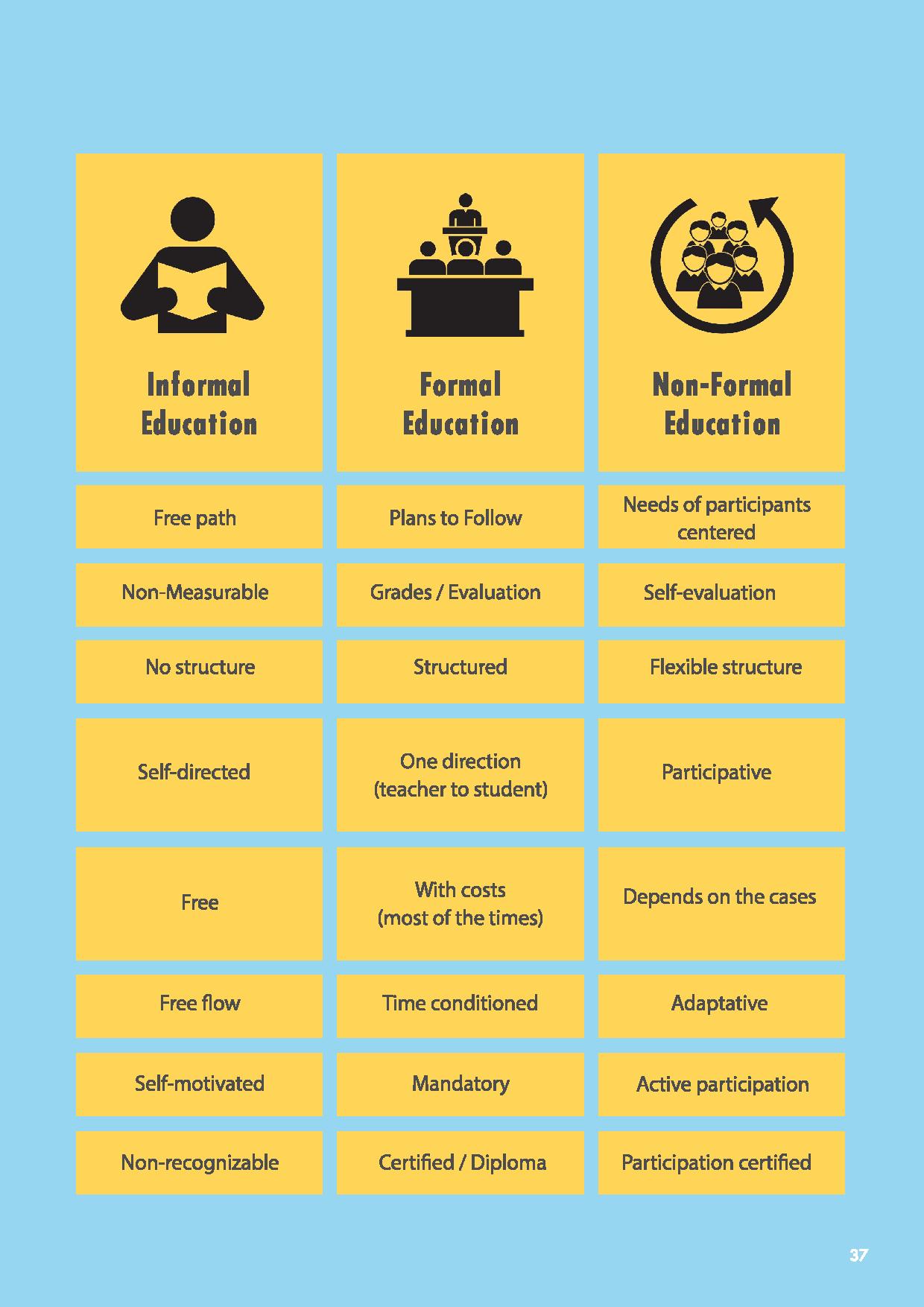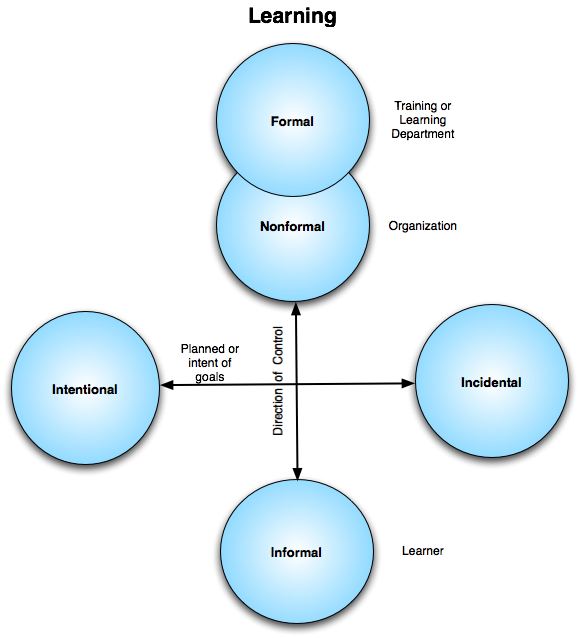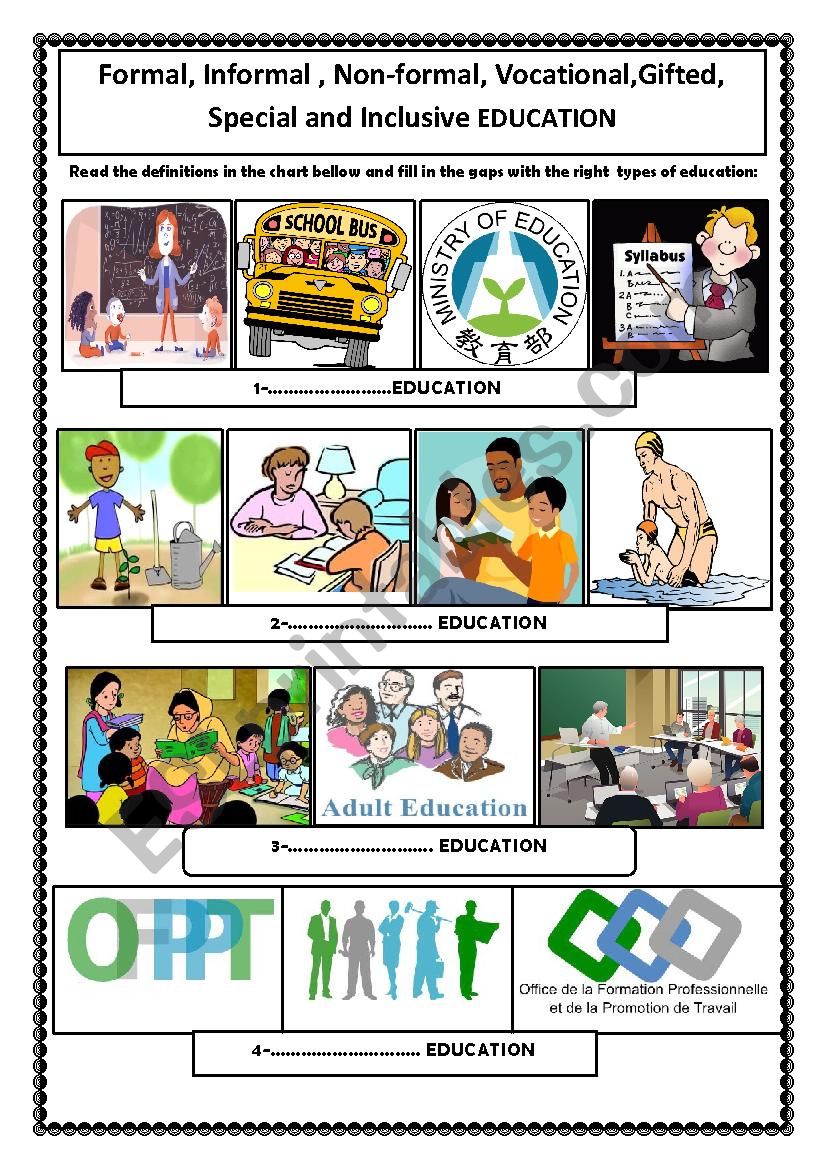

Non-formal education uses a variety of resources and technologies. Authority and control is vested in formally qualified and certiffed members of a teaching profession. Programs are discrete and few relationships exist between them.įormal education involves a labor-intensive technology and emphasizes teaching rather than learning.

Non-formal education programs have varying degrees and types of structure, but a variety of relationships and sequences are possible within them. Clear interrelationships exist between different programs. It involves uniform entry points, is graded into uniform units, and is sequential and continuous. Non-formal education is conducted close to where learners live and work, and the environment is functionally related to the learning which takes place.įormal education is rigidly structured around the parameters of time and the participants' age and/or performance. Learners are removed from their own environments for substantial periods. Such specific facilities that are used are minimal and low-cost.įormal education programs are isolated from the socio-economic environment and from social action. Non-formal education takes place in a variety of set tings, but emphasis is given to locales (such as the work place or home) which are not education specific. Specific characteristics such as literacy or formal educational qualifications are not essential for admission.įormal education takes place in highly visible and expensive institutions called "schools," whose sole purpose is educational. Literacy is essential (except at the lowest level) and successful levels is required for admission to higher levels. Non-formal education is geared to the needs and interests of the potential clientele.

The curriculum is dictated by the particular uses to which the learning will be put and consequently is closely related to the environment of the learners.Ĭlientele are defined in terms of their ability to cope with the level of education being offered. The curriculum is founded in theory and isolated from environmental and social realities. Units are discrete and variable and may be related to the precise functional learning needs of individual participants or small homogeneous groups. Non-formal education is task- or skill-centered and designed to produce quite specific changes in the learners. The content is standardized across large groups of learners. The basis of the curriculum for formal education is a well-defined package of cognitive knowledge with limited emphasis on psychomotor or affective consideration. Non-formal education is part-time, and activities may be timed in a variety of ways to meet the needs and convenience of learners. Non-formal education may be designed for children or adults, depending on the immediate learning needs arising from the individual's roles and stage in life.įormal education takes place full-time and does not permit other parallel activities, especially productive work. Length will depend on the period required to achieve the learning objectives in question.įormal education is child-centered and future-oriented and provides the basis for future participation in society and economy. Non-formal education programs are quite short, rarely longer than 2 years and often much shorter than this. One level of study leads immediately on to the next. Rewards are tangible and may include improvements in material well-being, productivity, self awareness, ability to control the environment, etc.įormal education programs are rarely less than 1 year in length and usually last for much longer periods, often 10 years or more. Non-formal education produces learning which is immediately valued in the context of the individual's or community's life situation. The end product of formal education is the acquisition of qualifications and certificates which enable individuals to obtain specific socio-economic positions in the wider society. It therefore emphasizes the learning of specific knowledge and skills and the inculcation of specific attitudes which result in immediate functional behavioral changes. Therefore, even in technical fields, it is general in character. Non-formal education meets short-term learning needs of individuals and communities. One definition of non-formal education: It is that education which takes place primarily outside the school's formal hierarchy (from kindergarten to graduate school), and is aimed primarily at helping people in such areas as literacy, learning a skill, better farming, better health, better nutrition, etc.įormal education is expected to provide the basis for an individual's whole future life. A comparison of formal and non-formal education


 0 kommentar(er)
0 kommentar(er)
